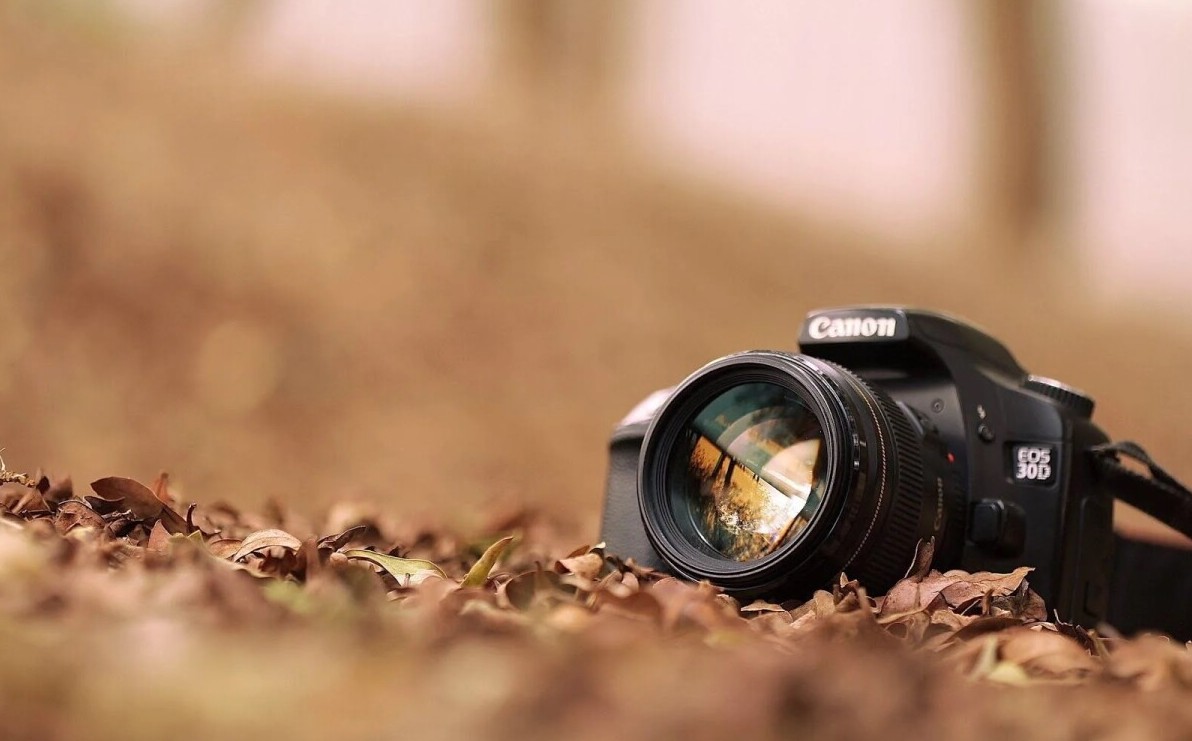Best Selling Products
Enhance Your Photography With 4 Unique Compositions Worth Trying
Nội dung
Don’t be afraid to experiment with new approaches to enhance your work. This article introduces four unique classic compositions, each with its own unique application, which will bring new creative experiences and help you discover more interesting perspectives in photography.

In the art of photography, composition is the element that shapes not only the technical aspect but also conveys the emotions and stories behind each photo. Have you ever wondered why a photo "attracts" the viewer at first sight? The answer lies in the way the photographer arranges the elements in the frame. In the article below, SaDesign will explore with you 4 "classic" compositions that any photographer should master to be able to create impressive and unique works.
1. General Introduction to Composition in Photography
In photography, composition is not simply the “arrangement” of objects in the frame, but it also includes the art of combining color, light and space to create a harmonious whole. A good composition not only makes the photo eye-catching, but also helps the viewer feel the message the author wants to convey. This means that no matter how advanced technology tools or modern techniques you have at your disposal, if you do not know how to arrange the composition in a subtle way, your photo will hardly achieve an inspiring effect.
.png)
2. The Importance of Photo Composition
Photo composition plays an important role and greatly affects the quality and effectiveness of a photo. Here are some of the importance of photo composition:
Create Balance: Photo composition helps create balance and harmony in a photo. Balance prevents the viewer’s eye from being distracted and helps them focus on the main subject or important elements in the photo. A balanced composition enhances the aesthetics and professionalism of the photo.
Creating a focal point: Composition also helps create a focal point in a photo. By placing a subject or important element in a particular position within the frame, it draws the viewer’s attention and creates a strong focal point.
Message Conveying: Photo composition can help convey a message effectively. By arranging the elements in a photo properly, it can create a connection and unity between the different elements, helping to convey a message clearly and powerfully.
Create Emotion and Impact: Photo composition can create emotion and have a powerful impact on the viewer. The judicious arrangement of elements such as color, light, curves and angles can create an impact that is seemingly invisible, creating a feeling, evoking emotion and stimulating the imagination.
.png)
Creating originality and creativity: Composition also plays an important role in creating originality and creativity in a photograph. By using different compositional methods and rules, photographers can create new perspectives, organize elements in unique ways, and create unique works of art.
3. Photo Compositions Every Photographer Needs to Know by Heart
3.1. 1/3 composition
The Rule of Thirds is one of the most popular and powerful photography techniques that every photographer should master. Arranging images using the Rule of Thirds helps create balance and harmony in the frame.
The idea behind this method is to divide the frame into 9 parts by drawing two horizontal lines and two vertical lines, creating 4 intersection points. Important objects in the photo should be placed at the intersection points or along the lines. The rule of thirds helps create natural balance and attracts the viewer's attention.
.png)
The rule of thirds is an important technique in photography and has many creative applications. Here are some applications of the rule of thirds in photography:
Portraiture: In portraiture, placing the subject’s eyes or face at one of the intersections of the 1/3 grid creates balance and emphasis. This helps create a natural balance and draws attention to the subject’s face. At the same time, leaving space around the face can create a sense of openness and interest.
Landscape: The 1/3 composition is great for landscape photography. Placing mountains, trees, or other landscape elements at one of the intersections of the 1/3 grid helps create balance and harmony. It creates a natural feel and draws the viewer's attention.
Architecture: The rule of thirds can be used to create balance and interest in architectural photography. Placing major architectural lines such as columns, doors, or landmarks at the intersections of the rule of thirds helps create balance and a sense of harmony in the photo.
Moving Objects: When shooting moving objects, the rule of thirds can help create movement and momentum in your subject. Placing your subject at one of the intersections or along the lines of the rule of thirds can create a striking balance and interest for your viewer.
.png)
Street Photography: In street photography, the rule of thirds can be used to create balance and draw attention to important elements in the frame such as people, unique objects or artistic elements. Placing them at intersections or along the lines of the rule of thirds helps create balance and emphasis.
Through the above applications, the rule of thirds plays an important role in creating balance, harmony and appeal in photography. However, it is not always necessary to follow the rule of thirds, but rather use it as a creative tool to create new effects and ideas in photography.
3.2. Center layout
Centered composition is a simple method of photography in which the main subject of the photo is placed in the center of the frame. This method creates a clear and focused center for the subject, creating a sense of stability and attracting attention.
.png)
The applications of the centered composition in photography are varied and flexible. Here are some examples:
Portraiture: In portraiture, placing the main subject, such as the person's face, in the center of the frame creates a strong focus on that person. This can highlight facial features, expressions, or create a sense of intimacy and immediacy with the viewer.
Decorative elements: Center composition is also suitable for creating focus on decorative elements such as flowers, decorative lights or prominent objects. By placing them in the center of the frame, it helps to create a strong focal point and create harmony in the photo.
Architecture and Landscape: In architectural or landscape photography, a center composition can be used to draw attention to a prominent architectural or landscape feature. Placing them in the center of the frame helps create balance and emphasis in the photo.
.png)
However, it is important to note that using a centred composition can make a photo look dull without the right balance or interest. Therefore, it is important to consider carefully and thoughtfully when using a centred composition to ensure that it suits your purpose and intention.
3.3. Symmetrical layout
Symmetrical composition in photography is the method of arranging elements in a frame to create balance and symmetry. This can be done by placing important elements in a symmetrical way vertically or horizontally. Symmetrical composition creates a balance and uniformity in the frame.
Here are some applications of symmetrical photography composition:
Portraiture: Place the subject in the center of the frame and create symmetry with surrounding elements such as lighting, color, or decorative elements. This creates a balanced image and draws attention to the model.
.png)
Architectural Photography: Symmetrical compositions are also suitable for architectural photography, where architectural elements such as doors, columns, or landmarks are placed in a symmetrical manner. Balance and symmetry create a sense of harmony and stability in architectural images.
Product Photography: Place the product in the center of the frame and create symmetry with the surrounding elements such as color, shape or curve. This helps create a beautiful and attractive product photo.
Nature Photography: Symmetrical composition can also be used in nature photography to create balance and symmetry in elements such as mountains, trees or water. Using symmetrical elements and creating a sense of uniformity and harmony in nature images.
Street Photography: By arranging elements in the frame symmetrically, such as streets, pedestrians or architectural elements, it creates a balance and evenness in the photo.
.png)
In short, symmetrical composition in photography creates balance and symmetry in the frame. Its applications are diverse, including portraiture, architecture, product, nature and street photography. Symmetrical composition helps create balance, harmony and draws attention to important elements in the photo.
3.4. Diagonal layout
Diagonal composition in photography is a method of arranging key elements in a frame diagonally from one corner to another. This creates a particular movement and momentum in the photo.
Diagonal composition can be applied to photography in many different ways, depending on the photographer's ideas and goals. Here are some examples of how diagonal composition can be applied to photography:
Portraiture: In portraiture, you can use diagonal composition by placing your model in one corner of the frame, then creating a diagonal line from one corner of the frame to the other. This creates movement and interaction between the model and the space around them, creating an artistically dynamic photo.
.png)
Nature Photography: In nature photography, you can use diagonal composition by creating a unique combination of elements in the frame. For example, you can place a subject in one corner of the frame and use other natural elements, such as a river or mountain range, to create a strong diagonal and create a special focal point.
Architectural Photography: In architectural photography, diagonal composition can create a sense of movement and balance. You can arrange lines, architectural elements, or symmetrical elements diagonally to create a particular combination and movement in the photo.
Street Photography: In street photography, diagonal composition can create a unique balance and interaction. You can use symmetrical elements, such as streets, pedestrians, or architectural elements, and create a diagonal line from one corner of the frame to another. This creates balance and dynamics in the street photo.
These are just a few examples of how to apply diagonal composition in photography. The most important thing is that we need to explore, experiment and be creative in using this composition to create unique and artistic photos.
.png)
In short, diagonal composition in photography brings dynamism, interaction, balance, harmony and creativity. It creates a special movement and makes the photo interesting. Diagonal composition is a powerful tool to create unique and highly interactive works of art.
To improve your photo composition, there are a number of tips and techniques you can apply such as learning about the principles of composition, specifically the four photo compositions mentioned above; understanding how the elements in the frame interact with each other and how to create balance and harmony.
Also, learn from art and photography: Study and learn from famous works of art and photography. Consider how they used composition, diagonals, symmetry, and other elements to create impressive photographs. Take lessons from them and apply them to your work.
Not only that, but self-assessment and analysis of your own photos will also help you improve your composition. Analyze the strengths and weaknesses of your composition and find ways to improve them. Finally, there is no substitute for practice and practice. Take more photos and try different styles and compositions. Practice will help you grasp and improve your composition skills over time.
We hope that after reading this article, you will have more useful knowledge to improve your composition skills and create truly "lively" and attractive photos. The art of photography is a journey of continuous learning and experimentation. Finally, SaDesign would like to send our sincere thanks to those who have followed the article. Please continue to follow so as not to miss other useful sharing articles, together explore the world through the lens and turn every moment into a meaningful work of art.












































